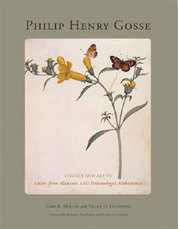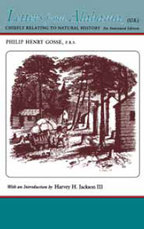|
On the cover: Booker T. Washington, founder of Tuskegee University.
|
FEATURE ABSTRACTS
 Booker T. Washington
Booker T. Washington (Library of Congress)
"The Uplift of Humanity": Booker T. Washington in Context
By Robert J. Norrell
Booker T. Washington rose from his childhood as a Virginia slave to become one of America’s most ardent advocates of African American progress. Acclaimed for his abilities as a public speaker and educator, Washington lectured widely and helped establish the Tuskegee Institute, later renamed Tuskegee University. Many people—both black and white—respected his work, and Washington maintained relationships with presidents and industry magnates. However, he also had detractors—white men who felt threatened by the possibility of equality for African Americans, but also some northern black intellectuals who felt Washington’s approach to equality was too patient and accommodating. A force in his own time, Washington’s legacy has often been ignored or overlooked, dismissed by critics who use contemporary standards to evaluate events of the past. As part of Alabama Heritage’s 100th issue, Robert J. Norrell revisits Washington and his legacy, offering a revised appraisal of this significant leader.
By Robert J. Norrell
Booker T. Washington rose from his childhood as a Virginia slave to become one of America’s most ardent advocates of African American progress. Acclaimed for his abilities as a public speaker and educator, Washington lectured widely and helped establish the Tuskegee Institute, later renamed Tuskegee University. Many people—both black and white—respected his work, and Washington maintained relationships with presidents and industry magnates. However, he also had detractors—white men who felt threatened by the possibility of equality for African Americans, but also some northern black intellectuals who felt Washington’s approach to equality was too patient and accommodating. A force in his own time, Washington’s legacy has often been ignored or overlooked, dismissed by critics who use contemporary standards to evaluate events of the past. As part of Alabama Heritage’s 100th issue, Robert J. Norrell revisits Washington and his legacy, offering a revised appraisal of this significant leader.
Additional Information
For a more comprehensive treatment of Washington’s life, see the author’s book Up from History: The Life of Booker T. Washington (Belknap/Harvard University).
The 1907 edition of Booker T. Washington’s book Up from Slavery may be read online at Google Books
The following articles in the Encyclopedia of Alabama will also be of interest:
• Booker T. Washington
• Up from Slavery
• Tuskegee University
• George Washington Carver
• J. Thomas Heflin
The Booker T. Washington National Monument.
About the Author
Robert J. Norrell is a native of Hazel Green, Alabama, in Madison County. He holds the Bernadotte Schmitt Chair of Excellence at the University of Tennessee, and he is currently the Fulbright Distinguished Chair in American Studies at the University of Tübingen. After earning a BA and PhD at the University of Virginia, Norrell taught at Birmingham-Southern College and the University of Alabama in Tuscaloosa. His 2009 biography, Up from History:The Life of Booker T. Washington, has just been released in paperback from Harvard University Press. In 2005 he published a well-reviewed interpretation of U.S. race relations,The House I Live In: Race in the American Century. His Reaping the Whirlwind: The Civil Rights Movement in Tuskegee won the Robert F. Kennedy Book Award in 1986. He is the author of seven additional books and twenty scholarly articles. His novel Eden Rise will appear in Spring 2012 from NewSouth Books.
For a more comprehensive treatment of Washington’s life, see the author’s book Up from History: The Life of Booker T. Washington (Belknap/Harvard University).
The 1907 edition of Booker T. Washington’s book Up from Slavery may be read online at Google Books
The following articles in the Encyclopedia of Alabama will also be of interest:
• Booker T. Washington
• Up from Slavery
• Tuskegee University
• George Washington Carver
• J. Thomas Heflin
The Booker T. Washington National Monument.
About the Author
Robert J. Norrell is a native of Hazel Green, Alabama, in Madison County. He holds the Bernadotte Schmitt Chair of Excellence at the University of Tennessee, and he is currently the Fulbright Distinguished Chair in American Studies at the University of Tübingen. After earning a BA and PhD at the University of Virginia, Norrell taught at Birmingham-Southern College and the University of Alabama in Tuscaloosa. His 2009 biography, Up from History:The Life of Booker T. Washington, has just been released in paperback from Harvard University Press. In 2005 he published a well-reviewed interpretation of U.S. race relations,The House I Live In: Race in the American Century. His Reaping the Whirlwind: The Civil Rights Movement in Tuskegee won the Robert F. Kennedy Book Award in 1986. He is the author of seven additional books and twenty scholarly articles. His novel Eden Rise will appear in Spring 2012 from NewSouth Books.
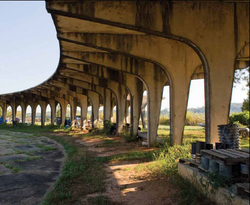 Pineda Island Recreation Center, Spanish Fort
Pineda Island Recreation Center, Spanish Fort(Robin McDonald)
History In Ruins
Text by Robert Gamble
Photography by Robin McDonald
Along Alabama’s highways and byways, crumbling architectural ruins remind us of the layers of history beneath our feet. Each one tells a story of the ambition, enterprise, and dreams someone had generations ago—and of the inevitable effects of time and change. Robert Gamble and Robin McDonald shed new light on these sites, detailing their history and uncovering their potential. From residences to industrial complexes, railways to resorts, churches to general stores, these sites represent fading facets of Alabama’s landscape and its cultural heritage.
Text by Robert Gamble
Photography by Robin McDonald
Along Alabama’s highways and byways, crumbling architectural ruins remind us of the layers of history beneath our feet. Each one tells a story of the ambition, enterprise, and dreams someone had generations ago—and of the inevitable effects of time and change. Robert Gamble and Robin McDonald shed new light on these sites, detailing their history and uncovering their potential. From residences to industrial complexes, railways to resorts, churches to general stores, these sites represent fading facets of Alabama’s landscape and its cultural heritage.
Additional Information
For those interested in historic preservation in Alabama, please visit:
• Alabama Historical Commission
• Alabama Trust for Historic Preservation
• Alabama Black Heritage Council
About the Author
Robert Gamble has served as senior architectural historian with the Alabama Historical Commission since 1985. A native Alabamian, he returned to his home state after working with the National Park Service in Washington and with UNESCO in Latin America. The author of a number of articles and books on historic architecture, he also directed historical research for the 1980s restoration of the State Capitol.
About the Photographer
Robin McDonald has been the designer of Alabama Heritage since 1991. Issue 101 will be the eightieth issue he designed. A native of London, England, and a graduate of Emory University and later Columbia University with an MA in art history, he has been a freelance graphic artist since 1984, and continues to practice from his home near Leeds. In 1981 he received a Gold Medal from the Art Director’s Club of New York for his work on Horizon Magazine and has since received numerous other awards, including for his work on Alabama Heritage. In 2003 the University of Alabama Press published his book Heart of a Small Town: Photographs of Alabama Towns. To see Robin McDonald’s photographs of Alabama ruins (some that did not appear in the magazine), visit this special section of the Alabama Heritage website.
For those interested in historic preservation in Alabama, please visit:
• Alabama Historical Commission
• Alabama Trust for Historic Preservation
• Alabama Black Heritage Council
About the Author
Robert Gamble has served as senior architectural historian with the Alabama Historical Commission since 1985. A native Alabamian, he returned to his home state after working with the National Park Service in Washington and with UNESCO in Latin America. The author of a number of articles and books on historic architecture, he also directed historical research for the 1980s restoration of the State Capitol.
About the Photographer
Robin McDonald has been the designer of Alabama Heritage since 1991. Issue 101 will be the eightieth issue he designed. A native of London, England, and a graduate of Emory University and later Columbia University with an MA in art history, he has been a freelance graphic artist since 1984, and continues to practice from his home near Leeds. In 1981 he received a Gold Medal from the Art Director’s Club of New York for his work on Horizon Magazine and has since received numerous other awards, including for his work on Alabama Heritage. In 2003 the University of Alabama Press published his book Heart of a Small Town: Photographs of Alabama Towns. To see Robin McDonald’s photographs of Alabama ruins (some that did not appear in the magazine), visit this special section of the Alabama Heritage website.
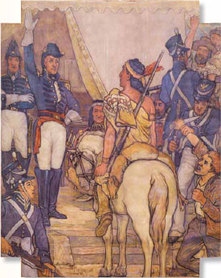 This Roderick D. MacKenzie mural
This Roderick D. MacKenzie mural from the Alabama State Capitol depicts
the surrender of Red Stick leader
William Weatherford to Andrew Jackson in 1814
(Alabama Department of Archives and History)
Alabama Fever: The Land Rush to Statehood
By Donna Cox Baker
Originally part of the Mississippi Territory, the region we now know as Alabama was predominately "Indian country" until 1814, when the Creeks forfeited around 20 million acres for their failure to prevent the "Red Stick" element from warring against the United States. The cession treaty fomented a land rush that brought tens of thousands of white settlers and their slaves to the territory in just a few years. Travel was tedious, irksome, and dangerous—forcing the emigrants to depend upon the hospitality of strangers and the services of the recently vanquished Indians. Lured by fanciful accounts of boundless resources, they were often disappointed to find a few log cabins where they expected towns and swamps where they expected meadows—but they persevered. Development was hindered by spotty and unreliable communication, and in many instances, the area remained isolated from the rest of the nation. After the Mississippi Territory was divided, Alabamians rushed to secure statehood and the security of federal representation for their own territory, which became the union’s twenty-second state barely five years after the land opened. As a special feature of our 100th issue, Alabama Heritage editor Donna Cox Baker recounts the journey to statehood and the people who made that journey possible in this commemoration.
Additional Information
We also suggest the following articles in the Encyclopedia of Alabama:
• Old St. Stephens
• Territorial Period and Early Statehood
• Creek War of 1813–14
• John Roderick Dempster MacKenzie, artist of the state capital murals
• William Wyatt Bibb
About the Author
Donna Cox Baker has served as editor-in-chief of Alabama Heritagesince 2002. She has degrees from Auburn University and UAB and taught university-level history for five years prior to beginning her doctoral work at the University of Alabama in 2006. She has served on the board of directors of the Alabama Historical Association since 2008. For her master’s research in history at UAB, Baker focused on mediation between native and white cultures on the southern frontier. Her articles, “Mary Musgrove: A Case Study in Frontier Cultural Mediation” and “The Treaty of San Ildefonso: Its Role in the Settlement of the Mississippi Territory,” were published in the Vulcan Historical Review. Baker co-authored “Clabber, Corn Pone, and Cured Hog” with Julie Locher for Alabama Heritage in 2004. She is nearing completion of a PhD in history from the University of Alabama, with dissertation research on afterlife beliefs in antebellum Alabama under the guidance of Dr. George Rable.
By Donna Cox Baker
Originally part of the Mississippi Territory, the region we now know as Alabama was predominately "Indian country" until 1814, when the Creeks forfeited around 20 million acres for their failure to prevent the "Red Stick" element from warring against the United States. The cession treaty fomented a land rush that brought tens of thousands of white settlers and their slaves to the territory in just a few years. Travel was tedious, irksome, and dangerous—forcing the emigrants to depend upon the hospitality of strangers and the services of the recently vanquished Indians. Lured by fanciful accounts of boundless resources, they were often disappointed to find a few log cabins where they expected towns and swamps where they expected meadows—but they persevered. Development was hindered by spotty and unreliable communication, and in many instances, the area remained isolated from the rest of the nation. After the Mississippi Territory was divided, Alabamians rushed to secure statehood and the security of federal representation for their own territory, which became the union’s twenty-second state barely five years after the land opened. As a special feature of our 100th issue, Alabama Heritage editor Donna Cox Baker recounts the journey to statehood and the people who made that journey possible in this commemoration.
Additional Information
- Abernethy, Thomas Perkins. The Formative Period in Alabama, 1815–1828. (University of Alabama Press, 1965)
- Brown, Jerry Elijah. “The Federal Road: Tourists in the Creek Nation,”Alabama Heritage 22 (Fall 1991), 20-31.
- Southerland, Henry deLeon, and Jerry Elijah Brown. The Federal Road Through Georgia, the Creek Nation, and Alabama, 1806–1836. (University of Alabama Press, 1989)
We also suggest the following articles in the Encyclopedia of Alabama:
• Old St. Stephens
• Territorial Period and Early Statehood
• Creek War of 1813–14
• John Roderick Dempster MacKenzie, artist of the state capital murals
• William Wyatt Bibb
About the Author
Donna Cox Baker has served as editor-in-chief of Alabama Heritagesince 2002. She has degrees from Auburn University and UAB and taught university-level history for five years prior to beginning her doctoral work at the University of Alabama in 2006. She has served on the board of directors of the Alabama Historical Association since 2008. For her master’s research in history at UAB, Baker focused on mediation between native and white cultures on the southern frontier. Her articles, “Mary Musgrove: A Case Study in Frontier Cultural Mediation” and “The Treaty of San Ildefonso: Its Role in the Settlement of the Mississippi Territory,” were published in the Vulcan Historical Review. Baker co-authored “Clabber, Corn Pone, and Cured Hog” with Julie Locher for Alabama Heritage in 2004. She is nearing completion of a PhD in history from the University of Alabama, with dissertation research on afterlife beliefs in antebellum Alabama under the guidance of Dr. George Rable.
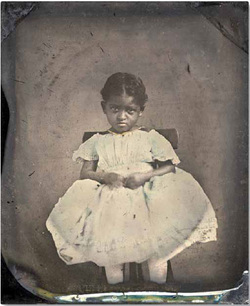 Many slave children held the fear
Many slave children held the fearof being kidnapped and sold
(Alabama Department of Archives and History)
Alabama Children Confront the Civil War
By James Marten
Although a number of adolescents participated in the Civil War by enlisting in local regiments, most of Alabama’s children spent the Civil War trying to retain as normal a life as possible. Relatively few accounts of their experiences survive, but James Marten has scoured them to provide a look at wartime childhood in Alabama. In addition to the stress of war itself, children often endured the prolonged absence of fathers, scarce provisions, and, in areas where battles occurred, tumultuous surroundings. Despite this, they strove to maintain the routine of everyday life, in some cases even attending school regularly. Throughout it all, they revealed the curiosity, innocence, and resilience of youth.
By James Marten
Although a number of adolescents participated in the Civil War by enlisting in local regiments, most of Alabama’s children spent the Civil War trying to retain as normal a life as possible. Relatively few accounts of their experiences survive, but James Marten has scoured them to provide a look at wartime childhood in Alabama. In addition to the stress of war itself, children often endured the prolonged absence of fathers, scarce provisions, and, in areas where battles occurred, tumultuous surroundings. Despite this, they strove to maintain the routine of everyday life, in some cases even attending school regularly. Throughout it all, they revealed the curiosity, innocence, and resilience of youth.
Additional Information
For a more comprehensive look at the state of children during the Civil War, see James Marten’s book The Children’s Civil War (University of North Carolina Press).
About the Author
James Marten is professor and chair of the history department at Marquette University. He is the author or editor of more than a dozen books, including Children and Youth in a New Nation, (2009); Children in Colonial America (2006); Childhood and Child Welfare in the Progressive Era: A Brief History with Documents (2004); Civil War America: Voices from the Homefront (2003); Children and War: A Historical Anthology (2002); and The Children’s Civil War (1998). The Children’s Civil War won the Alpha Sigma Nu Jesuit National Book Award for History in 1999 and was named an “Outstanding Academic Book” by Choice Magazine. He is currently president of the Society of Civil War Historians and is founding secretary-treasurer of the Society for the History of Children and Youth.
For a more comprehensive look at the state of children during the Civil War, see James Marten’s book The Children’s Civil War (University of North Carolina Press).
About the Author
James Marten is professor and chair of the history department at Marquette University. He is the author or editor of more than a dozen books, including Children and Youth in a New Nation, (2009); Children in Colonial America (2006); Childhood and Child Welfare in the Progressive Era: A Brief History with Documents (2004); Civil War America: Voices from the Homefront (2003); Children and War: A Historical Anthology (2002); and The Children’s Civil War (1998). The Children’s Civil War won the Alpha Sigma Nu Jesuit National Book Award for History in 1999 and was named an “Outstanding Academic Book” by Choice Magazine. He is currently president of the Society of Civil War Historians and is founding secretary-treasurer of the Society for the History of Children and Youth.
DEPARTMENT ABSTRACTS
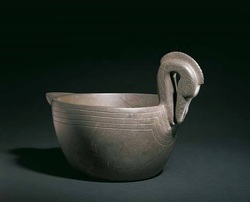 The Moundville Duck Bowl
The Moundville Duck Bowl (Moundville Archaeological Park)
Alabama Treasures
The Moundville Duck Bowl
By Bill Bomar
A true Alabama treasure, the Moundville Duck Bowl has finally returned to the land of its discovery. The prehistoric artifact, dating from the thirteenth or fourteenth century, remains one of the loveliest pieces of its kind. Although it was discovered in Alabama by Clarence Bloomfield Moore, the Duck Bowl was transported north, where it remained, most recently as part of the collection of the Smithsonian’s National Museum of the American Indian. The piece is on loan to the Moundville Archaeological Park and Museum through September 2011. For a time, at least, the Duck Bowl has come home.
Additional Information
About the Author
Bill Bomar is the director of the University of Alabama’s Moundville Archaeological Park and Museum. He has worked in museums and heritage sites for over twenty years and teaches museum studies as an adjunct professor at the University of Alabama.
The Moundville Duck Bowl
By Bill Bomar
A true Alabama treasure, the Moundville Duck Bowl has finally returned to the land of its discovery. The prehistoric artifact, dating from the thirteenth or fourteenth century, remains one of the loveliest pieces of its kind. Although it was discovered in Alabama by Clarence Bloomfield Moore, the Duck Bowl was transported north, where it remained, most recently as part of the collection of the Smithsonian’s National Museum of the American Indian. The piece is on loan to the Moundville Archaeological Park and Museum through September 2011. For a time, at least, the Duck Bowl has come home.
Additional Information
- Moundville Archaeological Park and Museum website
- National Museum of the American Indian website
- Encyclopedia of Alabama entry on Moundville
About the Author
Bill Bomar is the director of the University of Alabama’s Moundville Archaeological Park and Museum. He has worked in museums and heritage sites for over twenty years and teaches museum studies as an adjunct professor at the University of Alabama.
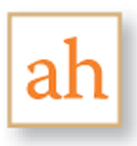
Becoming Alabama
Quarter by Quarter
By Joseph W. Pearson, Megan L. Bever, and Matthew L. Downs
Editor’s Note: Alabama Heritage, the Summersell Center for Study of the South, the University of Alabama Department of History, and the Alabama Tourism Department offer this department as a part of the statewide “Becoming Alabama” initiative—a cooperative venture of state organizations to commemorate Alabama’s experiences related to the Creek War, the Civil War, and the civil rights movement. Quarter by quarter we will take you to the corresponding seasons 200, 150, and 50 years ago—sometimes describing the most pivotal events, sometimes describing daily life, but always illuminating a world in flux. We will wait for the ultimate outcomes as our forbears did—over time. For those joining the story in progress, you can find earlier quarters on our website.
This quarter’s installment of “Becoming Alabama” delves deeper into those significant periods of Alabama’s history. Joseph Pearson explores the dynamics of Creek culture, where clashes began to arise between those Creeks who adhered to traditional mores and those who advocated a cooperative approach to changing events and circumstances. At the root of all these negotiations was the very nature of Creek cultural identity, which remained threatened by settlers encroaching on native lands and customs. Megan Bever looks at the early events of the Civil War, including the formation of the Confederacy and the fall of Fort Sumter. Moving into the twentieth century, Matthew Downs investigates how southern resistance to integration affected industrial growth and development and Alabama’s economic stability.
About the Authors
Joseph W. Pearson is a PhD student in the Department of History at the University of Alabama. His research interests include the nineteenth-century South, antebellum politics, and political culture.
Megan L. Bever is currently a PhD student in the Department of History at the University of Alabama. Her research interests include the nineteenth-century South and the Civil War in American culture.
Matthew L. Downs (PhD, Alabama) is an assistant professor of history at the University of Alabama at Birmingham. His dissertation focused on the federal government’s role in the economic development of the Tennessee Valley.
Quarter by Quarter
By Joseph W. Pearson, Megan L. Bever, and Matthew L. Downs
Editor’s Note: Alabama Heritage, the Summersell Center for Study of the South, the University of Alabama Department of History, and the Alabama Tourism Department offer this department as a part of the statewide “Becoming Alabama” initiative—a cooperative venture of state organizations to commemorate Alabama’s experiences related to the Creek War, the Civil War, and the civil rights movement. Quarter by quarter we will take you to the corresponding seasons 200, 150, and 50 years ago—sometimes describing the most pivotal events, sometimes describing daily life, but always illuminating a world in flux. We will wait for the ultimate outcomes as our forbears did—over time. For those joining the story in progress, you can find earlier quarters on our website.
This quarter’s installment of “Becoming Alabama” delves deeper into those significant periods of Alabama’s history. Joseph Pearson explores the dynamics of Creek culture, where clashes began to arise between those Creeks who adhered to traditional mores and those who advocated a cooperative approach to changing events and circumstances. At the root of all these negotiations was the very nature of Creek cultural identity, which remained threatened by settlers encroaching on native lands and customs. Megan Bever looks at the early events of the Civil War, including the formation of the Confederacy and the fall of Fort Sumter. Moving into the twentieth century, Matthew Downs investigates how southern resistance to integration affected industrial growth and development and Alabama’s economic stability.
About the Authors
Joseph W. Pearson is a PhD student in the Department of History at the University of Alabama. His research interests include the nineteenth-century South, antebellum politics, and political culture.
Megan L. Bever is currently a PhD student in the Department of History at the University of Alabama. Her research interests include the nineteenth-century South and the Civil War in American culture.
Matthew L. Downs (PhD, Alabama) is an assistant professor of history at the University of Alabama at Birmingham. His dissertation focused on the federal government’s role in the economic development of the Tennessee Valley.
 Albert James Pickett
Albert James Pickettdepicted Abraham Mordecai
by means of Jewish stereotypes
(Alabama Department
of Archives and History)
Portraits and Landscapes
Abraham Mordecai: “The Cradle-Rocker of Montgomery”
By Robert D. Temple
Abraham Mordecai’s role as founder of Montgomery remains clear. However, other details of his life have been veiled by history and corrupted by conflicting accounts. One of Alabama’s few Jewish settlers, Mordecai established an early trading post and a cotton gin in the area that would become Montgomery and earned the trust of the native community, for a time even serving in a diplomatic capacity and negotiating between natives and settlers. Accounts of a falling out between Mordecai and local Creeks offer widely disparate versions of events, leaving historians to puzzle out the true legacy of this settler.
Additional Information
Encyclopedia of Alabama entry on Jewish Life in Montgomery
About the Author
Robert D. Temple is the author of the award-winning book, Edge Effects.
Abraham Mordecai: “The Cradle-Rocker of Montgomery”
By Robert D. Temple
Abraham Mordecai’s role as founder of Montgomery remains clear. However, other details of his life have been veiled by history and corrupted by conflicting accounts. One of Alabama’s few Jewish settlers, Mordecai established an early trading post and a cotton gin in the area that would become Montgomery and earned the trust of the native community, for a time even serving in a diplomatic capacity and negotiating between natives and settlers. Accounts of a falling out between Mordecai and local Creeks offer widely disparate versions of events, leaving historians to puzzle out the true legacy of this settler.
Additional Information
Encyclopedia of Alabama entry on Jewish Life in Montgomery
About the Author
Robert D. Temple is the author of the award-winning book, Edge Effects.
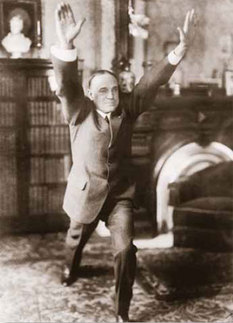 Billy Sunday
Billy Sunday(Library of Congress)
Southern Religion
The Basement: Foundations of Alabama’s Largest Christian Youth Movement
By Charity R. Carney
In honor of our 100th issue, Alabama Heritage debuts its newest department, “Southern Religion.” In the first installment of this new department, Charity Carney explores the latest iteration of evangelism in Alabama. Driven by Matt Pitt, Birmingham’s The Basement uses the latest technology to target contemporary youth. At the same time, it draws on an evangelical tradition with deep roots, revealing how even the hottest new thing has origins in our past.
About the Author
Charity R. Carney received a PhD from the University of Alabama, is the author of the forthcoming book Ministers and Masters: Methodism, Manhood, and Honor in the Old South (LSU Press, 2011), and currently is developing a second book on the modern megachurch.
Joshua D. Rothman, standing editor of the “Southern Religion” department of Alabama Heritage, is associate professor of history at the University of Alabama and director of the university’s Frances S. Summersell Center for the Study of the South, which sponsors this department.
The Basement: Foundations of Alabama’s Largest Christian Youth Movement
By Charity R. Carney
In honor of our 100th issue, Alabama Heritage debuts its newest department, “Southern Religion.” In the first installment of this new department, Charity Carney explores the latest iteration of evangelism in Alabama. Driven by Matt Pitt, Birmingham’s The Basement uses the latest technology to target contemporary youth. At the same time, it draws on an evangelical tradition with deep roots, revealing how even the hottest new thing has origins in our past.
About the Author
Charity R. Carney received a PhD from the University of Alabama, is the author of the forthcoming book Ministers and Masters: Methodism, Manhood, and Honor in the Old South (LSU Press, 2011), and currently is developing a second book on the modern megachurch.
Joshua D. Rothman, standing editor of the “Southern Religion” department of Alabama Heritage, is associate professor of history at the University of Alabama and director of the university’s Frances S. Summersell Center for the Study of the South, which sponsors this department.
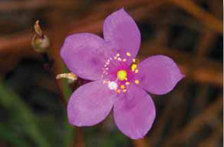 Menges' fame-flower,
Menges' fame-flower,discovered by Brother Wolfgang Wolf
of St. Bernard's Abbey in Cullman
(W. Mike Howell)
Nature Journal:
Eight Acre Rock
By L. J. Davenport
Sometimes nature’s loveliest gems lurk out of sight, hidden from passersby. This quarter in “Nature Journal,” L. J. Davenport explores one such treasure, the secret garden at Eight Acre Rock. Venture with Davenport into Alabama’s own rock garden, a secluded wonderland too often missed in the bustle of everyday life.
About the Author
Larry Davenport is a professor of biology at Samford University in Birmingham, Alabama.
Eight Acre Rock
By L. J. Davenport
Sometimes nature’s loveliest gems lurk out of sight, hidden from passersby. This quarter in “Nature Journal,” L. J. Davenport explores one such treasure, the secret garden at Eight Acre Rock. Venture with Davenport into Alabama’s own rock garden, a secluded wonderland too often missed in the bustle of everyday life.
About the Author
Larry Davenport is a professor of biology at Samford University in Birmingham, Alabama.
Reading the Southern Past
Philip Henry Gosse
By Stephen Goldfarb
Reviewer Stephen Goldfarb surveys the work of naturalist Philip Henry Gosse and discusses the long-awaited publication of his work in Philip Henry Gosse: Science and Art in Letters from Alabama and Entomologia Alabamensis (University of Alabama Press, 2010). The book finally “does justice to what might just be the most exquisite paintings of insects in existence,” says Goldfarb. He also discusses the republication of Gosse’s 1859 text Letters from Alabama (U.S.): Chiefly Relating to Natural History, also providing finely detailed imagery of Alabama’s antebellum life—though this time with words.
About the Author
Stephen Goldfarb holds a PhD in the history of science and technology. He retired from a public library in 2003. In December 2010, he was awarded the Elizabeth B. Gould Research Award of the Mobile Historic Development Commission for his curating of the exhibit “Marian Acker Macpherson: Etcher of Old Mobile” and for his authorship of the accompanying catalog.
Philip Henry Gosse
By Stephen Goldfarb
Reviewer Stephen Goldfarb surveys the work of naturalist Philip Henry Gosse and discusses the long-awaited publication of his work in Philip Henry Gosse: Science and Art in Letters from Alabama and Entomologia Alabamensis (University of Alabama Press, 2010). The book finally “does justice to what might just be the most exquisite paintings of insects in existence,” says Goldfarb. He also discusses the republication of Gosse’s 1859 text Letters from Alabama (U.S.): Chiefly Relating to Natural History, also providing finely detailed imagery of Alabama’s antebellum life—though this time with words.
About the Author
Stephen Goldfarb holds a PhD in the history of science and technology. He retired from a public library in 2003. In December 2010, he was awarded the Elizabeth B. Gould Research Award of the Mobile Historic Development Commission for his curating of the exhibit “Marian Acker Macpherson: Etcher of Old Mobile” and for his authorship of the accompanying catalog.

